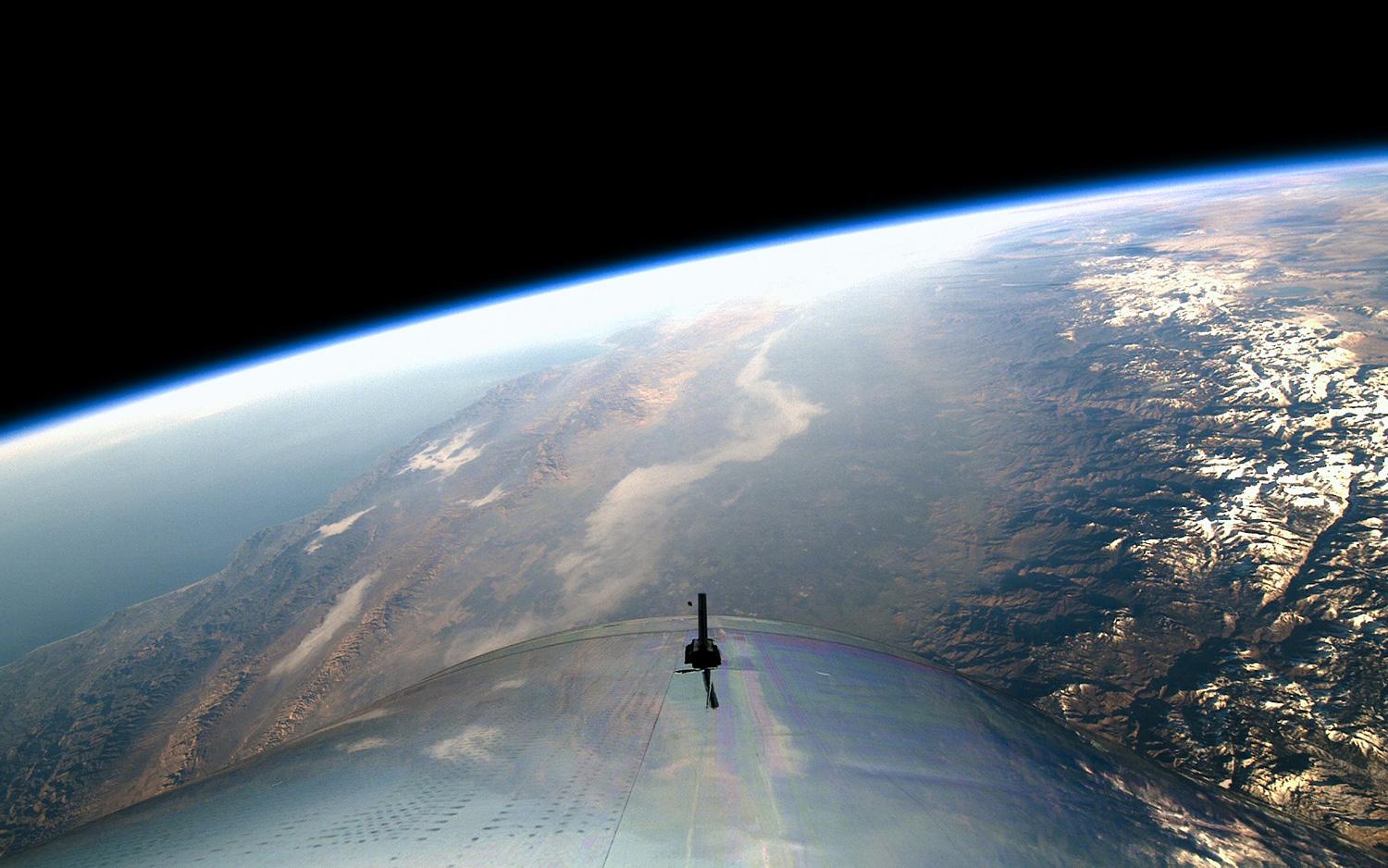Virgin Galactic to launch its 1st suborbital spaceflight from Spaceport America in October: report
The launch window opens on Oct. 22.

Virgin Galactic will fly to space again next month, if all goes according to plan.
The space tourism company's latest SpaceShipTwo vehicle, known as VSS Unity, has made two crewed test flights to suborbital space, first in December 2018 and then again in February 2019.
Virgin Galactic is now preparing for its next suborbital test flight, which could launch as soon as Oct. 22, CNBC reported, citing documents filed last week with the U.S. Federal Communications Commission.
Related: How Virgin Galactic's SpaceShipTwo works (infographic)
"The [Oct. 22] flight will be the first of two that the space tourism company has planned to complete testing of its SpaceShipTwo spacecraft system and should have just two test pilots on board," CNBC's Michael Sheetz wrote.
"Virgin Galactic said last month that the second test spaceflight will then have four 'mission specialists' inside the cabin," Sheetz added. "If both test flights succeed, Virgin Galactic expects to fly founder Sir Richard Branson in the first quarter of 2021."
A spokesperson for Virgin added that the Oct. 22 date is meant to mark the beginning of a flight window, so it is possible the flight will take place shortly thereafter, Sheetz wrote. Virgin also plans four-hour test flights of SpaceShipTwo's carrier aircraft, WhiteKnightTwo, on Oct. 1 and Oct. 7.
Get the Space.com Newsletter
Breaking space news, the latest updates on rocket launches, skywatching events and more!
The next spaceflight, whenever it takes place, will be the first to fly from Virgin Galactic's commercial hub at Spaceport America in New Mexico. The ones that have flown to date lifted off from, and landed at, the Mojave Air and Space Port in California.
A privately developed space plane called SpaceShipOne made three successful suborbital spaceflights with a pilot on board in 2004, winning the $10 million Ansari X Prize in the process. Virgin Galactic was founded that same year with the aim of bringing tourists into space, using the successor SpaceShipTwo spacecraft. The company initially hoped to fly people within a few years, but several delays have ensued, including one that followed a 2014 test-flight crash that killed one pilot.
Virgin Galactic won't be the first outfit to ferry private citizens into space. NASA flew a handful of people to orbit who were not government astronauts during the early days of the space shuttle program, under the payload specialist program. Charlie Walker flew on three space shuttle missions in 1984 and 1985 as a payload specialist for McDonnell Douglas, who paid $40,000 USD for each flight, according to a 2004 NASA interview with Walker. Walker is usually said to be the first non-government individual to reach space.
The first international commercial spaceflight was in August 1989, which saw Japanese journalist Toyohiro Akiyama fly on a Soyuz spacecraft under a deal between the Tokyo Broadcasting System and the Soviet Union. Dennis Tito was the first person to fund his own flight to space, visiting the International Space Station for about a week in 2001 on a Russian Soyuz spacecraft. A handful of other people followed Tito's lead, also paying their way to the space station aboard a Soyuz.
Follow Elizabeth Howell on Twitter @howellspace. Follow us on Twitter @Spacedotcom and on Facebook.
Join our Space Forums to keep talking space on the latest missions, night sky and more! And if you have a news tip, correction or comment, let us know at: community@space.com.

Elizabeth Howell (she/her), Ph.D., was a staff writer in the spaceflight channel between 2022 and 2024 specializing in Canadian space news. She was contributing writer for Space.com for 10 years from 2012 to 2024. Elizabeth's reporting includes multiple exclusives with the White House, leading world coverage about a lost-and-found space tomato on the International Space Station, witnessing five human spaceflight launches on two continents, flying parabolic, working inside a spacesuit, and participating in a simulated Mars mission. Her latest book, "Why Am I Taller?" (ECW Press, 2022) is co-written with astronaut Dave Williams.









